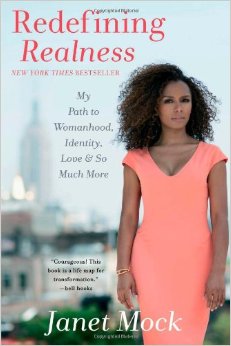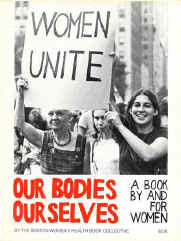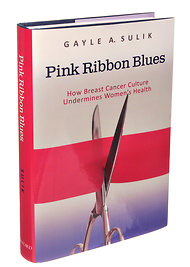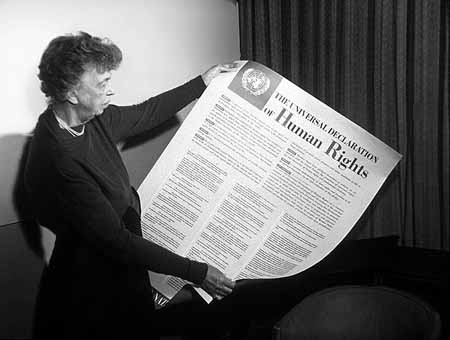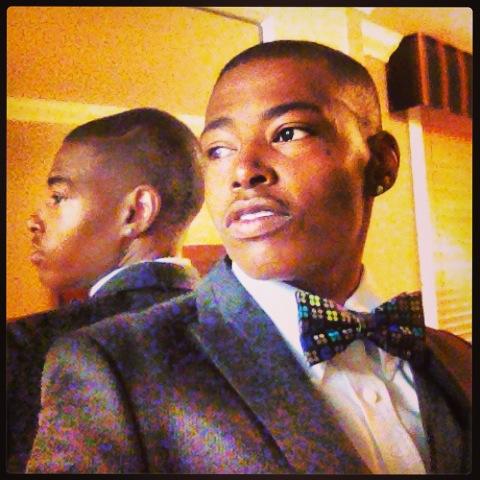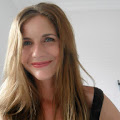It is with grave concern that we, the undersigned Somali academics, researchers, students, writers, activists, community members and our non-Somali academic and activist allies, write to you today.
We are deeply troubled by the extraordinary omission of Somali academics and researchers from the board of editors, international advisory board, and published authors of the newly launched academic journal Somaliland Journal of African Studies (SJAS). We are further disturbed by comments made publicly on Facebook by advisory board member and social anthropologist Dr. Markus Hoehne in response to and dismissive of the Somali-led critique of academic exclusion and Western dominance in SJAS and the field of Somali Studies more generally.
In its recent inaugural issue, the Somaliland Journal of African Studies described itself as an academic journal “covering African affairs at large, but with a particular focus on East Africa and the Horn.” It also stated that the journal was the product of collaboration “with students and scholars of the Institute of Peace and Conflict Studies of the University of Hargeisa.” It was brought to our collective attention in late March that the editorial and advisory boards do not reflect this supposed partnership with UofH. Not a single Somali student or scholar from Hargeisa, the broader Somali region, or the vast Somali diaspora is represented in SJAS. Instead, the editorial and advisory board is made up of 9 Europe and US based academics – as well as two graduate student editors – and three Ethiopian academics affiliated with Addis Ababa University.
In response to this exclusion of Somali researchers and scholars from SJAS, there were conversations on Facebook between young Somali academics and activists on how to respond, and the announcement of a Twitter-based discussion on March 26th under the hashtag #CadaanStudies. “Cadaan” is the Somali term for whiteness, and the hashtag was intended to capture important questions of power, authority and knowledge production about the Somali territories, and how Somalis continue to be marginalized in academic and policy discussions concerning them.
It was in one of these Facebook conversation threads that Dr. Markus Hoehne entered in defense of SJAS and dismissal of this critique. It is necessary to quote his words at length:
I did NOT come accross [sic] many younger Somalis who would qualify as serious SCHOLARS – not because they lack access to sources, but because they seem not to value scholarship as such. Sorry to say, but to become a successful political scientist, social anthropologist, sociologist or human geographer, you study many years without an economically promising end in sight. You have to work hard before you get out one piece of text and even then, you often get more criticism than praise. You certainly do not become rich quickly as a social scientist, at least if you have to pay your bills in Europe or Northamerica. Now, where are all the ‘marginalised’ Somalis who do not get their share in academia? I guess you would have to first find all the young Somalis who are willing to sit on their butt for 8 hours a day and read and write for months to get one piece of text out. Okay, before you ‘crucify’ me now for my neo-colonial racist male writing, I ADMIT that given the lack of good quality higher education in social sciences INSIDE Somalia, one cannot enter into a fair competition between cadaan iyo madow [black] scholars here. BUT, there are many young Somalis in UK, USA and continental Europe who have a chance to get a degree from a well-established university in social sciences and become master analysts of Somali and other affairs (where are Somali sociologists who work on issues of discrimination or inequality in the USA or Europe, where are Somali religious scholars who engage in the debate about Islam in Europe? Sometimes you have to look beyond your Somali navel). But in my life, I met only very FEW diaspora Somalis who seriously pursued such a career (in social sciences). So, your activism is good, but what you actually would have to do – instead of getting outraged at cadaan scholars, is to sit down and get your analysis out and criticise not cadaan for writing sth, but your own brothers and sisters for not writing better stuff!
He continued to argue back and forth with over 30 educated Somalis, stating “there is not enough good and serious scholarship in the form of articles and books coming from Somali social scientists,” that he “did not see many young Somalis seriously engaging in social sciences,” and demanded they prove their existence to him: “Please send me the references to articles and books written by young Somali social scientists that have been published in well-established journals and with reputable publishers.”
When Hoehne was asked to leave the thread by many who felt patronized and attacked by his comments, he crudely responded in broken Somali translating to: “Fine. I will go. You and your friends can talk about a stupid white man who is colonizing you, but I think that when you are finished talking about colonialism, you will go back to your Somali tribalism.” In subsequent discussions on other Somali Facebook pages following the successful #CadaanStudies Twitter discussion, he continued to comment in incredibly divisive ways, questioning the authenticity of diaspora Somalis who participated in Twitter activism and reducing the critique of knowledge production and systemic power to one that pitted individual white against black, us (non-Somali Somali Studies scholars) versus them (Somalis, who he viewed as lacking the credentials and discipline to produce academic work and participate in the field). He positioned himself, a German anthropologist, as more in touch with Somali reality than the Somalis who were challenging him online, while continuing to argue that the conversations taking place online was not “real debate”:
“You all seem to be in the diaspora. INSIDE Somalia, I have never encountered this type of flat reaction towards me. Some people hated me for certain opinions, many challenged me – but there was a real debate about THE MATTER, not flat accusations of racism and white supremacy. In my subjective opinion, Somalis in Somalia had a much more constructive and interesting way of debating than many of you (whoever ‘you’ exactly is) in the diaspora, who have so many means compared to your brothers and sisters who never left the motherland. Maybe you should get your equation right: If I am a white supremacist, you are a black supremacist compared to your brothers and sisters back in Somalia who have not all the high quality education and economic means you can access.”
We are appalled by the words of Dr. Markus Hoehne, his lack of self-awareness regarding the seriousness and violence of his comments and thinking, and his inability and unwillingness to engage. We are concerned that these words should come from an academic who considers himself an expert on Somalis and has power in both the field of Somali Studies as well as policy about and within the Somali territories, evidenced by the decision to commission him for the project “Community Safety Forums & Community Police Dialogues in Somaliland, Puntland and South Central Somalia” by the Danish Demining Group and funding from the UK Department for International Development (DFID).
It is our collective belief that what Dr. Markus Hoehne’s comments and the exclusionary Somaliland Journal of Somali Studies show us is the necessity and urgency of discussing and deconstructing issues of power and authority in Somali Studies, and thinking through how this has shaped academic knowledge production about Somalis historically and into the present. We are keenly aware that Somali Studies emerged alongside the colonization of the Somali territories, and that inextricably linked to the expansion of European power in the Horn of Africa was the production of cultural and historical information about Somalis. In the postcolonial present, the production of knowledge about the Horn of Africa remains largely in the hands of European and American academics and analysts, increasingly linked to the informational needs of neocolonialism and the War on Terror. There is too much at stake for our voices and concerns to be dismissed.
Signed,
– Safia Aidid, PhD Candidate in History, Harvard University
– Ilyas Abukar, PhD Candidate in American Studies, University of Maryland-College Park
– Cawo Abdi, Assistant Professor of Sociology, University of Minnesota
– Abdi Latif Ega, author of “Guban” and PhD Candidate, Columbia University
– Abdi Ismail Samatar, Professor & Chair, Department of Geography, Environment and Society, University of Minnesota
– Yusuf Dirie, Teaching Fellow in Innovation and PhD Researcher, University of Sussex
– Hodan Mohamed, Co-Founder of Sahan Literary Forum and PhD Candidate in Population Health, University of Ottawa
– Fowsia Abdulkadir, PhD Candidate in Canadian Studies, Carleton University
– Ahmed Ibrahim, PhD Candidate in Cultural Anthropology, City University of New York
– Hared Mah, PhD Student in Economics, Southern Illinois University
– Fadumo Dayib, PhD Student, University of Helsinki, Mid-Career Masters of Public Administration and Mason Fellow, Harvard Kennedy School
– Jamal Adam, PhD Candidate in Education, University of Minnesota
– Sumaya Mohamed, Researcher, Department of Anthropology, University of Washington
– Safia Gahayr, poet, trade unionist, educator and PhD Candidate in Sociology and Equity Studies in Education, OISE, University of Toronto
– Sofia Samatar, Assistant Professor of Literature and Writing, California State University Channel Islands
– Ifrah Abdullahi, PhD Candidate in Pediatrics and Child Health, University of Western Australia
– Maimuna Mohamud, Researcher at the Heritage Institute for Policy Studies (Mogadishu). Masters, Refugee & Forced Migration Studies, Oxford and Masters, Global Gender Studies, University at Buffalo
– Saeed Abdulkadir Said (Naji), PhD Candidate in Federation University Australia, Ex-Director of Training and Consultancy of Simad University, Mogadishu
– Mohammed Ibrahim Shire, author, documentary filmmaker and PhD Candidate in Management Science, Loughborough University
– Abdiwasa Abdilahi Bade, PhD, Assistant Professor, Department of Political Science and International Relations, Addis Ababa University
– Zamzam Ahmed Abdi, PhD Candidate in International Development Studies, Utrecht University Netherlands
– Ifrah Magan, MSW University of Chicago, PhD Candidate , University of Illinois at Chicago
– Sahro Ahmed Koshin, Activist, Author, Poet, MA Cultural Anthropology, Leiden University, MA Advanced Development Studies, Radboud University, PhD Candidate at the University of Nairobi
– Charmarkeh Houssein, PhD in Communication, Universite Sorbonne, Postdoctorate and Part-Time Professor, Department of Communication, University of Ottawa
– Hashim Yonis, PhD Candidate in Executive Leadership, University of Minnesota
– Deika Mohamed, PhD Student, Dalla Lana School of Public Health, University of Toronto
– Deika Omar Ahmed, PhD Candidate in Sociology, University of Ottawa
– Kalid Abdinasir, PhD Candidate, Department of Social Anthropology, Addis Ababa University
– Alexander Weheliye, Professor of African American Studies, Northwestern University
– Adan Makina, PhD Candidate in Public Policy & Administration, Walden University & WardheerNews Editor, Interviews and Books Section
– Hussein Mohamed Yusuf, MSc Environmental and Climate Change, Lecturer at Jigjiga University Ethiopia
– Mohamed Guudle, MSc in Economics, Bilgi University Turkey, incoming PhD Student
– Sharmaarke Abdullahi, MA Public Policy, Professor at Algonquin College Social Services Department and Business Consultant with the City of Ottawa
– Nasra Giama, Assistant Professor and DNP in Nursing, University of Minnesota
– Ismail Warsame, M.Ed., Somali Narrative Project, University of Maine
– Subeyda Mohamed, BA Hons Political Science, BEd York University, MA Candidate in Immigration and Settlement Studies, Ryerson University
– Mohamed Guleid, BA Kampala International University and Lecturer, University of Burao & Addis University Colleage – Burao Branch
– Mohamed Awil, MA Candidate, International Relations and Diplomacy, University of Hargeisa
– Ahmed Abdulhalim (Naaji), Banker, Researcher, Masters in Islamic Finance Practice, INCEIF Malaysia, incoming PhD Student in Political Economics, United Nations’ African Institute for Economic Development and Planning
– Aurala Uarsama, MA, M.Ed. University of Alberta, Independent Researcher
– Hawa Y. Mire, Masters in Environmental Studies, York University
– Mohammed Omar, MA Candidate in Public and International Affairs, University of Ottawa
– Dirie Yusuf, graduate student, St. Cloud State University
– Hodan A. Mohamed, MA, Ontario Institute for Studies in Education, University of Toronto
– Hudda Ibrahim, Editor-in-Chief of Somalicurrent, graduate student in Peace Studies/Policy Analysis & Political Change, University of Notre Dame
– Nimmo Osman Elmi, award winning Norweigian anthropologist, Masters in Philosophy, University of Oslo and incoming PhD Student
– Amina Musa, graduate student in International Development and Social Change, Clark University
– Guled Jama, MB BChir Candidate, University of Cambridge and Researcher at King’s Centre for Global Health
– Abdi Aidid, JD Candidate, Yale University
– Ifrah F. Ahmed, JD Candidate, CUNY School of Law and Co-Founder and Editor of Araweelo Abroad Magazine
– Mahdi Hussein, JD Candidate, Osgoode Hall Law School, York University
– Subban Jama, JD Candidate, Osgoode Hall Law School, York University
– Aswan Salsal, JD/LLM, Programme de Droit Canadien, Faculty of Law, University of Ottawa
– Marwo Abdi Bayow, JD Candidate, BA Sociology University of Victoria
– Yasin Ahmed Ismail, BA Politics & International Affairs, Wake Forest University and incoming JD Candidate
– Asha Noor, MS in Conflict Analysis and Resolution, George Mason University
– Abdi Egal, MPA/MSPS, Suffolk University
– Abdinafic Ali, Masters Candidate in Finance and Banking, Kadir Has University Turkey
– Warsan Noor, Masters in Spanish/Bilingual and Multicultural Studies, George Mason University
– Ayaan Moussa, Masters in Gender and Women’s Studies, George Mason University
– Mohamed Noor, Masters in Economics/Finance from American University.
– Iftin Fatah, Masters in Public Policy and International Commerce, George Mason University
– Omar Fateh, Masters in Public Administration, George Mason University
– Sadia Aden, Masters in Health Informatics, George Mason University
– Shakur Ali, MA International Politics and Human Rights, City University London
– Sagal Jibril, BA International Development Studies, MA Environmental Studies, Graduate Diploma Refugee and Migration Studies, York University
– Ahmed A. Abdullahi, MA Peace and Conflict Studies, Coventry University UK
– Ahmed Ahmed, M.Ed Candidate, Ontario Institute for Studies in Education, University of Toronto
– Zenab Abdirahman, MA Educational Planning, Economics and International Development, UCL Institute of Education, University of London and Co-Founder of Somali Heritage and Academic Network
- Abdi Egal, MPA/MSPS, Suffolk University
– Abdirazak Noor, MD, Saratov State Medical University, Russia
– Bilan Hashi, MA Candidate in Gender Studies, Queen’s University
– Amira Adawe, MPH, Public Health Practitioner and Researcher. Environmental Health instructor, School of Public Health, University of Minnesota
– Ali Abdi Mohamud, MA Candidate, Department of Business and Economics, Daffodil International University of Bangladesh
– Bashir Ali, MSc in Public Policy and Administration, London School of Economics
– Abderazzaq Noor, Masters in Media Studies and Communication, Monash University Melbourne,
– Abdullahi Abdisalan, BA Political Science, MA International Development Studies, Kampala International University and writer/humanitarian expert
– Kafia Yusuf, Policy Advisor, BA International Development, MA Public Policy and International Affairs, University of Ottawa
– Sumaya Abdulkadir Shoole, MA Candidate in History, Fatoni University and Founder of
www.takayaa.com
– Ali Basha Farah, LLM Human Rights and Democratisation in Africa, University of Pretoria, Researcher in Academy of Peace and Development, Hargeisa
– Muna Ali, Masters Student in Interdisciplinary Studies, York University and Co-Founder and Managing Director of Gashanti Unity
– Idil Isse, BA in Political Science, Concordia University and incoming MA Student, Albert Ludwig University
– Sagal Abdulle, English and Linguistics, Nottingham Trent University, Co-Founder and Editor of Araweelo Abroad Magazine
– Hannah Wolff, BA City University of New York, Colin Powell Public Policy Fellowship, MSc LSE Health and Population
– Mahad Gelle, MBA in Financial Management from University of Mysore
– Abdinasir Hashi Jimale, Masters in International Law, International Islamic University of Malaysia Kuala Lumpur
– Hamdi Ali, MD Student, Windsor University School of Medicine
– Ali Bihi, MD, Trauma and Orthopedic Surgical Fellow at Watford General Hospital, University College London
– Nasra Jimale, BA Psychology, Masters of Social Work Candidate, Minnesota State University
– Sadia Hassan, BA Candidate African and African American Studies, Dartmouth College
– Shirin Ramzanali Fazel, writer and member of the advisory board of Transnationalizing Modern Languages, University of Warwick
– Huda Yusuf, human rights activist and MSc in Chemistry, University of Victoria
– Abdulqadir Bashir Hussein, BSc Urban, Energy and Environmental Planning, School of Architecture, Design and Planning, Aalberg University Copenhagen
– Hoda Samater, MSW, RSW, Community Activist, Therapist, Begin to Heal Counselling Services
– Shiffo Farah, BA, BSW, Masters in Social Work, RSW, Faculty Advisor York University School of Social Work
– Marian Nur, Hons BSocSc in International Economics and Development, University of Ottawa
– Salaad Sh.Yusuf Caddow, student at Sakarya University Turkey, researcher and writer
– Mohamed Ibrahim, historian and Masters of Science, Highway Engineering at Strathclyde University, Glasgow
– Batula Mohamed Mursal, BA Social Science and Linguistics, Jaamacada Ummada Mogadishu 1987 and human rights activist (Somalia)
– Muhammad Dirie Muhammad, BA Sociology and Armed Conflict Studies, University of Nairobi
– Muna Sheekh Maxamud, MSW, University of Toronto and blogger
– Ikram Jama, storyteller, community activist, co-founder of Sahan Literary Forum, Masters in Political Science, Carleton University
– Zakaria Abdulle, BA History, Political Science and Sociology, University of Toronto
– Jama Hagi-Yusuf, community organizer and student, Molecular Biology and Biotechnology, University of Waterloo
– Abdi Hersi, Masters of Public Policy Candidate, University of Toronto
– Fatima Hassan, Masters in Commercial Law, Best Dissertation in Economic and Commercial Law 2014, University of the West of England
– Diamond Abdulrahim, BA Asian and Middle Eastern Studies, University of Cambridge
– Billeh A. Hamud, Lawyer, JD University of Ottawa, Hons BA with High Distinction, Political Science, University of Toronto
– Ahmed Mohamed Musa, social researcher and head of research department, Observatory of Conflict and Violence Prevention, University of Hargeisa
– Ali Maalin,
– Amal Dirie, MD Candidate, Iuliu Hatieganu University of Medicine and Pharmacy
– Abdirisak Mohamed Abdi, BA Economics & Political Science, Masters in Economic Policy and Planning, Hargeisa Somaliland
– Jama Noor, MSc Candidate in International Relations, University of Bristol
– Ahmed Nur Muse, MA Sociology, India, founding member of Hargeisa School of Social Work and Vice President, Somaliland Professional Social Workers Association
– Ubah Adan (MUNA), BSc Hons Biomedical Science, Brunel, London, MSc Biotechnology, Kingston University, London
– Mohammed Aden Fidar, MBA, Business Group Manager, Sinewave International Group and Civil Engineer
– Khalid Bashir, DePaul University
– Sumaya Ugas, student, International Development and African Studies, McGill University and columnist at Ezibota
– Zeinab Aidid, student, Anthropology and Equity Studies, University of Toronto
– Ayan A Ibrahim, BA International Studies/BA Commerce, Deakin University, Melbourne
– Iman Mohamed, Georgetown University School of Foreign Service-Qatar
– Surer Qassim Mohamed, University of Western Ontario
– Abdirahman Aydarus Yussuf, student, Politics, Philosophy and Economics, University of Washington
– Huda Ismail, Brunel University (UK) Creator and collector of Xalwo Crafts
– Yasmin Yousof, undergraduate in Politics and Education, Brandeis University
– Mohamed Jamfa, Toronto community activist and organizer
– Shukri Harbi, BA English, BA Sociology, University of Utah
– Abdinasir Elmi, BA Sociology, Moi University
– Faiza Kanyare, BSc International Politics, Brunel University UK
– Saharla Musa, student, Paediatric Nursing, Middlesex University
– Dirir Abdullahi, student, Neurobiology and Chemistry, University of Washington
– Nimo Hussein Farah, 2014 Bush Fellow and Co-Founder of SALLI Arts, Independent Artist/Activist
– Samiya Abdi, Health Promotion Consultant, Public Health Ontario
– Marian Yusuf, MSc., Registered Dietitian and Public Health Nutrition Consultant
– Ahmed Busury, Biomedical Scientist/Specialist, Director of Public Health Agency of Jubaland State Somalia, MSc Cellular Pathology, University of Westminister
– Abdirahman Yousuf Mohamoud, Second Level Masters York University UK, Masters in Research and Development, Kampala University Uganda, BA Economics
– Anisa Ali Abdi Sabrie, graduate Masters of Business Administration, Specialty General Management, Asia e University, Malaysia
– Ayaan H Affan, Masters in Nursing and Postgraduate Family Nurse Practitioner, Winona State University
– Deeko O. Hassan, Pharm D. Candidate, University of Nebraska Medical Center
– Hanaansan Jasmin, Public Health and Infection Control Policy, Anglia Ruskin University, Public Health Practitioner at National Health Service (NHS)
– Fatuma Abdullahi, writer, digital publisher and founder, Warya Post
– Said Yussuf, founder, Somalia Online
– Zahra Jibril, BA Politics and International Relations, MA International Development Management University of Westminster. Co-Founder of Horizon Institute, Somaliland and Kenya
– Firdawsa Ahmed, BA Special Education and
– Hamda Yusuf, BA International Studies, University of Washington-Seattle
– Mohamed Ali, Toronto artist, The Control Group Art Collective
– Magan Muhumed, spoken word artist, political and human rights activist
– Hali Farah, Corporate Talent Advisor, Aon
– Sadia Abdullahi, Senior Youth Outreach Worker, Boys and Girls Club Ottawa
– Mohamud Mumin, photographer and visual storyteller, Hundred Miles Pictures
– Kowthar Omar, photographer, education researcher and educator, Toronto District School Board
– Leyla Bile, Filmmaker
– Khadra Ali, Co-Founder and Executive Director of Gashanti Unity, Co-Creator and Co-Executive Producer of Refuge Productions
– Kinsi Abdulleh, visual artist, founder of NUMBI Arts and editor of literary arts magazine SCARF
– Riya Jama, artist and founder of Artivists of Somalia
– Huda Hassan, writer, University of Toronto
– Lali Mohamed, health equity provider and non-profit leader
– Edil Ayan, writer
– Abdi Osman, MFA documentary media, Ryerson University
– Saynab Mohamud, community activist, antiracist campaigner and co-founder of Hawa’s Haven
– Hibaq Gelle, community activist, Toronto
– Amran Ali, Co-Founder of Sahan Literary Forum and Community Activist
– Muna Mohamed, Health and Safety Advisor and Co-Founder of Idylcollective
– Khadija Ahmed, English teacher, BA International Development Studies, York University
– SOMALIA ONLINE
– SOMALILAND NATION NEWS
– Somali Students’ Association, University of Toronto, Mississauga
– Adan Mohamed, Head, English Broadcasting Section, Somaliland National Television and BA (Hons) Journalism and Communication, Middlesex University London
– Ubax Cristina Ali Farah, writer
– Mahad Yusuf, Executive Director of Midaynta Community Services
– Kate Jama, Musician and Artist, BA Arts/Law (Gender, Diversity and Sexuality Studies), University of Latrobe/University of Sabanci (Melbourne, Istanbul)
– Abdi Roble, Documentary Photographer/Archivist, Founder of Somali Documentary Project
– Alas Ibrahim Ali, Mogadishu, Master of Arts in Development Studies, Kampala University
– Lucky Omaar, MA Candidate in Education, Gender and International Development at UCL Institute of Education, London & 2014-2015 Fulbright Scholar
– Abdifatah Ahmed, Clinical Library Science, University of North Dakota
– Ladan Yusuf, MPA, New York University, Executive Director, Crossing Barriers
– Suban Nur Coolay, MA Candidate in Digital Rhetoric and Professional Writing, Michigan State University
– Mohamed Mohamud, MPA, Evergreen College
– Mohamed Ali, BS Public Health, Shenandoah University
– Abdifatah Aden, Candidate for Master in International Law and Master of Diplomacy, Australian National University, Canberra
– Sophia Abdi Yusuf Moreau, Community Advocate, Women in War
– ARAWEELO ABROAD
– Mukhtar A. Yasin, Masters in Electrical and Electronic Engineering, Malaysia
– Abshir Askar, BA Economics University of Hargeisa, M.Ed University of Nairobi, Post-Graduate Diploma in Educational Research Studies, Islamic University of Uganda, Post-Graduate Diploma Institute of Peace and Conflict Studies, University of Hargeisa
– Amira Ashour, B.Comm. Honours in Accounting, Carleton University, working for Lockheed Martin
– Mohamed Omer Aidid, BA Public Administration, American University of Beirut
– Khalif Y. Ahmed, Engineer, BS University of Wyoming, MSc New Mexico State University, MSc Colorado State University
– Ali M. Osman, MSc in Development Studies at London Southbank University, active in development and peace-building process in Somalia
– Ayuub M Ragis, Masters in Pharmacology at Gothenburgs University, currently studying History
– Hafsa Ahmed, Medical Student, University of Sharjah
– Omar Yusuf Abdulle, MA Candidate Political Science & Public Administration, Sakarya University, Turkey
– Isahak Ahmed, BA Political Science & BA Economics in Society, Marymount University, Executive Director of ICOSAO (Somalia Relief Agency), Senior Consultant Somalia Peace Builders Initiative, Founder & Former Head, English Section SLNTV
– Mariam Awale, Student in Social Work at Seneca at York University, Applicant Specialist at Oral Aesthetic Advocacy Group Inc
– Mohamed Hussein, MBChB, University of Nairobi
– Hussein Jabiri, BA Broadcasting and Communication, Cal State LA, MA in Film, Ohio University
– Nassir Ahmed, MSc in Economics and Auditing and Masters Candidate in African Studies, Copenhagen University
– Faduma Ali, BA International Development Studies, York University
– Amina Yasin, MSc Planning, Land-Use and Regional Development, University of Guelph, OGS Scholar
– Ayan Mahamoud, Activist, Founder of Kayd Arts and Organiser of Somali Week Festival London
– Jama Musse Jama, Ethnomathematician, Researcher & Author, founder of Redsea Cultural Foundation and Hargeisa International Bookfair
– Dr. Ahmed Ali, Research Director (Compton Group), Cardiff School of Biosciences, Cardiff University UK
– Mohamed Hussein Gaas, PhD Fellow and Guest Lecturer at Noragric, Faculty of Social Sciences, Norwegian University of Life Sciences and Research Fellow at Fafo Institute of Applied International Studies
– Baar Hersi, secondary school teacher, community activist, and presenter
– Istar Nur Ahmed, MA in International Relations, Diplomacy and Affairs at United States International University, Nairobi Kenya
– Abdirasak Ismail Qalinle, Engineer, BSc (Honors) in Electronic and Electrical Engineering, International University of Africa, Khartoum Sudan
– Halima Ahmed, International Relations and Africana Studies, Mount Holyoke College, Founder and Editor of Somalia – the Nation of Poets
– Halima Salah, Civil Engineering Student, American University of Sharjah
– Sahra A. Yusuf, LL.M. in Environmental and Natural Resources Law, University of Oregon
In Solidarity
– Rinaldo Walcott, Director, Women and Gender Studies Institute, University of Toronto
– Allison Taylor, PhD Brandeis, sociocultural anthropologist
– Sean Hawkins, Associate Professor, Department of History, University of Toronto
– Antoinette Handley, Associate Professor, Department of Political Science, University of Toronto
– Rima Berns-McGown, Associate Director, Centre for the Comparative Study of Muslim Societies and Cultures, Simon Frasier University
– John Comaroff, Professor of African and African American Studies and Anthropology, Harvard University
– Jean Comaroff, Professor of African and African American Studies and Anthropology, Harvard University
– Laura Correa Ochoa, PhD Student in History, Harvard University
– John Gee, PhD Candidate in History, Harvard University
– Rita Nketiah, PhD Student in Women’s Studies, University of Western Ontario
– Tshweu Moleme, Political Science researcher, Munk School at the University of Toronto
– Rachel Thompson, PhD Candidate in Anthropology, Harvard University
– Juliane Okot Bitek, poet and PhD Candidate in Interdisciplinary Studies, Liu Institute for Global Issues, University of British Columbia
– Ryan Kelpin, MA Political Science at York University and Executive DIrector, Cities First
– Kelly-Mae Saville, Student Chair for Sociology and Policy, Aston University UK
– Tendisai Cromwell, writer and filmmaker
– Sakinah Hasib, student, University of Waterloo
– AFRICA IS A COUNTRY
– Binyavanga Wainaina, writer
– Melissa Finn, Lecturer in Political Science, Wilfrid Laurier University
– Erin MacLeod, PhD, Lecturer, University of West Indies, Mona Campus
– Jasmine Zine, Associate Professor of Sociology, Wilfrid Laurier University
– Elleni Centime Zeleke, Lecturer and PhD Candidate, Social and Political Thought, York University
– Amber Young, Graduate Student, Social Work, University of Calgary
– Harry Verhoeven, Assistant Professor at Georgetown University, Associate Member of Department of Politics and International Relations, Oxford University, Convener of Oxford China-Africa Network
– Yolande Bouka, PhD, Researcher, Institute of Security Studies Nairobi
– Bethlehem Seifu Belaineh, student, activist, community organizer and Racial Minority Senator, Brandeis University
– Rowa Mohamed, University of Western Ontario
– Tracian Meikle, PhD Candidate, Department of Geography, Planning, and International Development, University of Amsterdam
– Benjamin Dix, PhD Candidate in the Anthropology of Violence, Director of PositiveNegatives
– Kariima Ali, BSc Psychology, Goldsmiths University UK
– Netta Kornberg, Research Assistant, Faculty of Education, York University
– Juliane Hammer, Associate Professor, Department of Religions Studies, University of North Carolina-Chapel Hill
– Denise Spitzer, PhD, Canada Research Chair, University of Ottawa
– Caroline Elkins, Professor of African and African American Studies and History, Harvard University
– Monica Fagioli-Ndlovu, PhD Candidate in Anthropology, The New School for Social Research
– TRANSITION MAGAZINE
– Mulugeta Hailemariam Zegeye, BA Addis Ababa University, MSc University of Glasgow, Former Member of Ethiopian Parliament (Chairman of Budget Committee) and Fmr Chairman of Ethiopian Athletics, African Languages Program, Harvard University
– Jamilla Davis, student in Anthropology and Educational Studies, Bates College
– Hawa Noor, writer, BA International Relations and African Studies, University of Toronto
– Jacqueline Russel, MA, Health Research Specialist, Toronto Public Health
– Sarah Kennedy Bates, PhD Candidate in History, Harvard University
– Alemayehu Weldemariam, former Professor at Suffolk University, graduate studies George Mason University
– Nakanyike Musisi, Associate Professor, Department of History, University of Toronto
– Yannick Marshall, poet, PhD Candidate, Middle East, South Asian, and African Studies, Columbia University
– James J.T. Roane, PhD Candidate in History, Columbia University
– Axelle Karera, PhD Candidate in Philosophy, Penn State University
– Tiffany Tsantsoulas, PhD Student in Philosophy, Penn State University
– Ricky Varghese, PhD, RSW, psychotherapist, art critic and writer, University of Toronto
– Kathy Kiloh, PhD, Instructor, OCAD University
– Vasuki Shanmuganathan, PhD Candidate in German and Women and Gender Studies, University of Toronto
– Ajamu Nangwaya, PhD, Instructor, Seneca College
– Rachael Hill, PhD Candidate in African History, Stanford University
– Lena Weber, MSc Candidate in Human Ecology, Lund University Sweden
– Bhakti Shringarpure, editor-in-chief Warscapes Magazine and Assistant Professor, University of Connecticut
– Hillina Seife, PhD Candidate in History, University of Michigan
– Natasha Issa Shivji, Lecturer, Department of History, University of Dodoma, Tanzaniaand PhD Candidate in History, New York University
– WARSCAPES MAGAZINE
– Natasha Obiri, blogger, BA History and Philosophy, University of Toronto
– Keguro Macharia, Independent Scholar, Nairobi
– Stephanie Belmer, PhD, Instructor, Vanier College
– Kay Kaufman Shelemay, G. Gordon Watts Professor of Music and Professor of African and African American Studies, Harvard University
– Alessandra Di Maio, Associate Professor, Department of Humanities, University of Palermo, Italy
– Efe Levent, National Chiao Tung University, PhD Institute of Applied Arts
– Andrew Pope, PhD Candidate, Harvard University
– Chambi Chachage, PhD Candidate, Harvard University
– THE AFRICA COLLECTIVE
– Andreas Admasie, PhD Candidate, University of Basel
– Alula Eshete, MBA Candidate, Harvard Business School
– Molefi Kete Asante, Professor, Temple University
– Molefi Kete Asante Institute for Afrocentric Studies
– Afrocentricity International Inc.
– Maxi Schoeman, Professor and Head of Department of Political Sciences, University of Pretoria, South Africa
– David McGraw Schuchman, MSW, LICSW, Clinical Social Worker, Minneapolis
– Michael Busch, Senior Editor of Warscapes Magazine, and Doctoral Candidate in Political Science, The Graduate Center, CUNY
– Aaron Bady, Postdoctoral Fellow, University of Texas, Austin
– Alexandra Berceanu, MA Communications & Culture, Ryerson University
– Moyosore Arewa, student, Wilfred Laurier University and Opinion Editor, The Chord
– George Brooke-Smith, BSc Philosophy, Politics and Economics, University of York
– Sinthujan Varatharajah, PhD Candidate in Political Geography, University College London, University of London
– Meghan Healy-Clancy, PhD, Lecturer on Social Studies and on Women, Gender and Sexuality, Harvard University
– Jeremy Rich, PhD, Chair, Social Sciences Department, Maywood University
– Karen Larbi, BA Hons, Law and Social Anthropology, SOAS, University of London
– Azeezat Johnson, PhD Student in Geography, University of Sheffield UK
– Jill Kelly, History, Southern Methodist University
– Bilal Zenab Ahmed, PhD Student, SOAS, University of London
– Arman Osmany, MA Comparative Literature, King’s College London
– Jonathan Paul Katz, MSc Student in Migration Studies, University of Oxford
– Keren Weitzberg, PhD, Postdoctorate Researcher, Joseph H. Lauder School of Management and International Studies, Department of History, University of Pennsylvania
– Nadiya Ali, PhD Candidate, SOAS, University of London and Co-Founder, Indigenous Insight-Africa
– MJ Rwigema, PhD Student in Social Work, University of Toronto
– Jonathan Paul Katz, MSc Student in Migration Studies, University of Oxford
– Sarah Nwafor, African Studies, University of Birmingham
– Jessica Cammaert, PhD, Sessional Lecturer, Department of Global Studies, Wilfrid Laurier
– Kabita Chakraborty, Assistant Professor, Children’s Studies, Humanities LAPS, York University
– Elisabeth Gade, MA Student, University of Oslo, Norway
– Nathaniel Matthews, PhD Candidate, Northwestern University
– Gatete TK, LLM Human Rights and Democratisation of Africa, University of Pretoria
– Shireen Ahmed, writer and sports activist
– Joakim Gundel, Political Analyst, Katuni Consult
– Robin Turner, PhD, Associate Professor of Political Science, Butler University
– Anni Movsisyan, BA Mixed Media Fine Art, University of Westminster UK and Activist
– Kim Yi Dionne, Assistant Professor of Government, Smith College
– Gurminder K. Bhambra, Professor of Sociology, University of Warwick UK
– Jasmine Gani, Lecturer, School of International Relations, University of St.Andrews
– Wossen Ayele, JD Candidate, Harvard Law School
– Emmanuel Akyeampong, Professor of History and African and African American Studies, Harvard University
– Rannveig Haga, Postdoctoral Researcher, Södertörn University College
– Simmi Dullay, Black Consciousness Decolonial Scholar and Cultural Producer
– Marcia Lynx Qualey, ARABLIT e-magazine
– Stephanie Lämmert, PhD Student in History, European University Institute
– Nishi Singh, MA Candidate in Globalization Studies, Institute on Globalization and the Human Condition, McMaster University
– Ylva Habel, Assistant Professor, Media and Communication Studies, Department of Learning and Communication, Södertörn University Sweden
– Uros Zver, Department of History and Civilization, European University Institute Italy
– Sara Ahmed, Professor of Race and Cultural Studies, Goldsmiths, University of London
– Muneer Karcher-Ramos, Community Faculty, University of Minnesota
– Tommaso Giordani, Doctor in History and Civilization, European University Institute, Florence
– Silvan Heinze, Student of Area Studies, Humboldt University of Berlin
– Monica J. Casper, PhD, Professor and Head, Gender and Women’s Studies, Affiliated Faculty in Africana Studies & School of Sociology, University of Arizona
– Stephanie Latty, PhD Student, Social Justice Education, Ontario Institute for Studies in Education, University of Toronto
– Dylan Lambert-Gilliam, Student of Global Studies, University of California, Santa Barbara
– Aili Tripp, Professor of Political Science and Gender & Women’s Studies, University of Wisconsin-Madison
– Angela Last, PhD, School of Geographical and Earth Sciences, University of Glasgow
– Jesse Mills, PhD, Associate Professor and Chair of Ethnic Studies, University of San Diego
– Brian Kwoba, PhD Student in History, Oxford University and organizer of Oxford Pan-Afrikan Forum
Names are being continuously added (see here for updated list). To add your name, please post in the comments or email safia.aidid@gmail.com.
The post Can the Somali Speak?: Open Letter to Dr. Markus Hoehne and the Somaliland Journal of African Studies appeared first on The Feminist Wire.
 Brooklyn Renee’ Payton, from Oakland, California, is a recent graduate from the California Institute of Integral Studies. Brooklyn is devoted to social and community change and to rethinking how that change happens, and who it reaches, specifically in the Black community and with regards to women and children. This fall, Brooklyn will pursue her MSW at the University of Southern California and expand her research on intergenerational trauma within the Black community, and its manifestations in building and maintaining intimacy within the family structure.
Brooklyn Renee’ Payton, from Oakland, California, is a recent graduate from the California Institute of Integral Studies. Brooklyn is devoted to social and community change and to rethinking how that change happens, and who it reaches, specifically in the Black community and with regards to women and children. This fall, Brooklyn will pursue her MSW at the University of Southern California and expand her research on intergenerational trauma within the Black community, and its manifestations in building and maintaining intimacy within the family structure.



